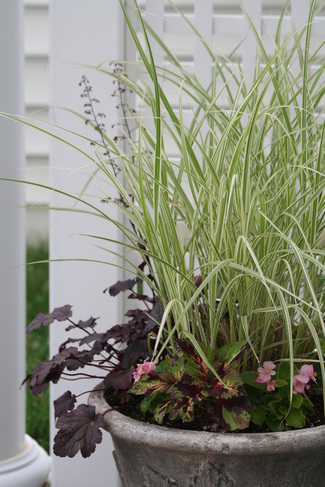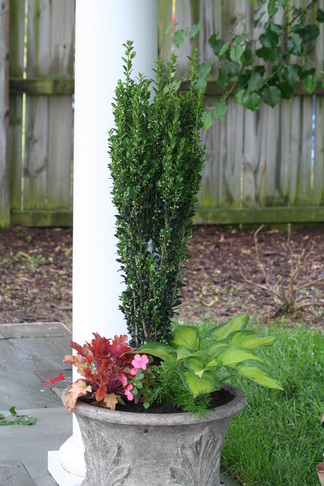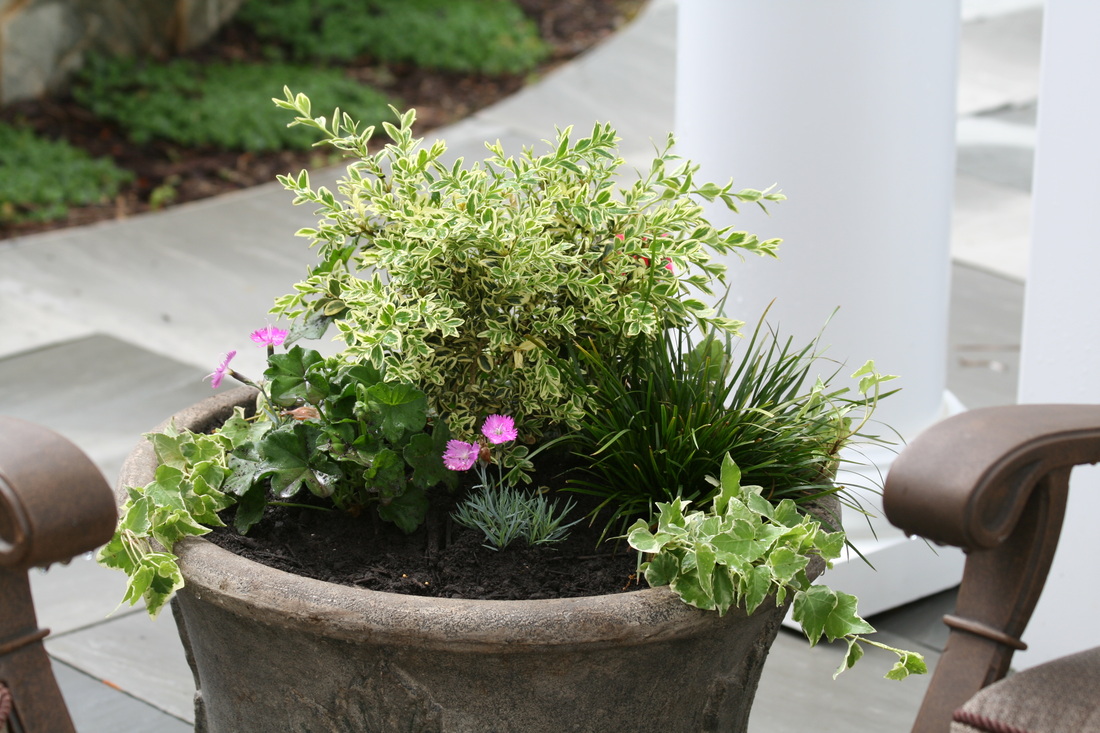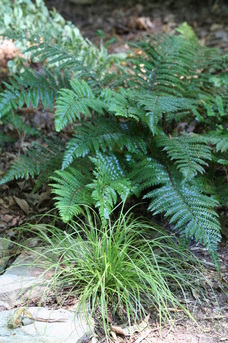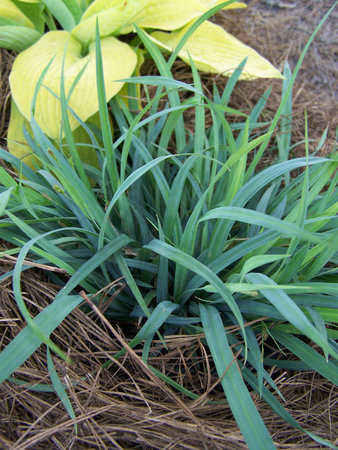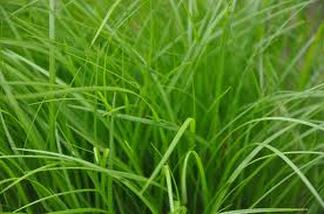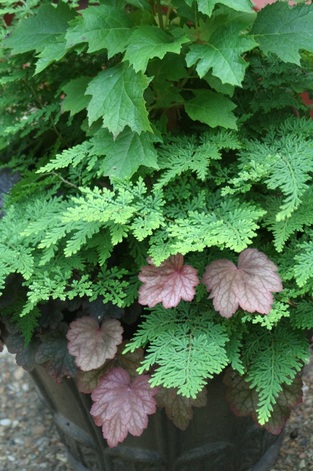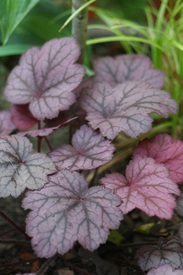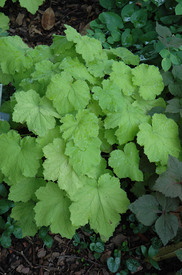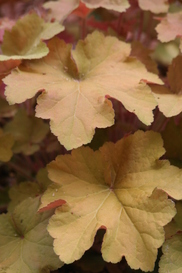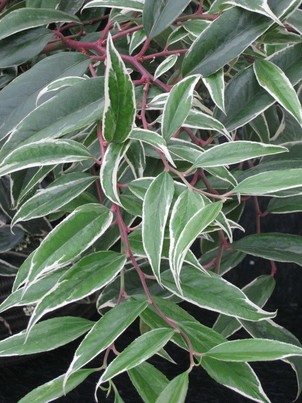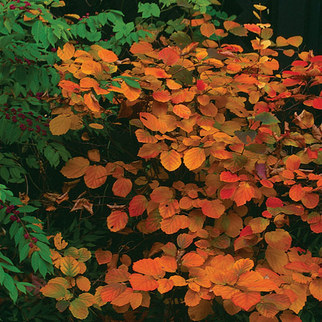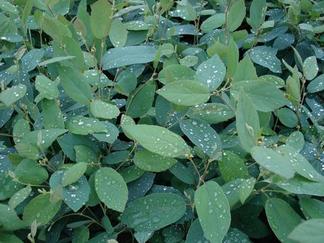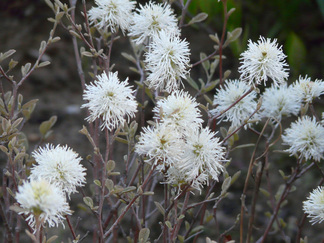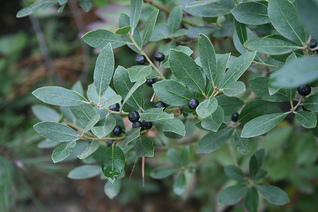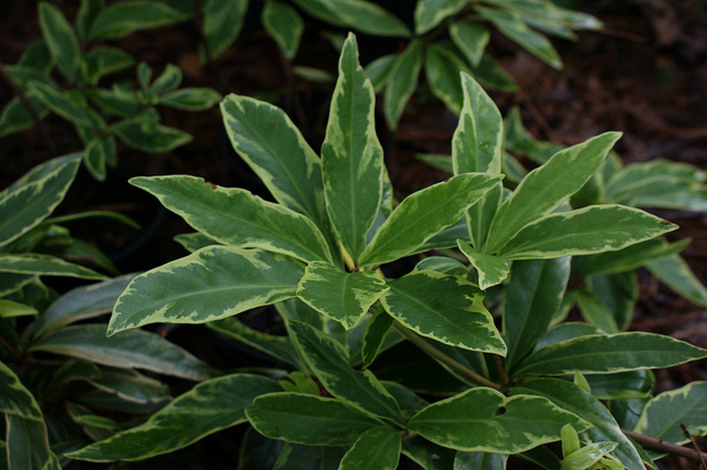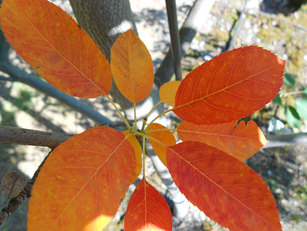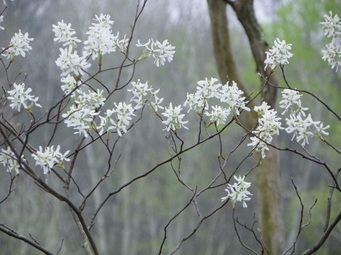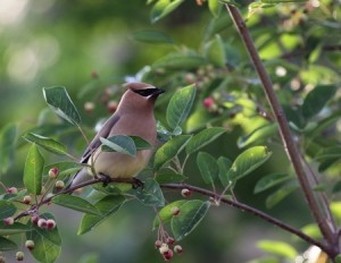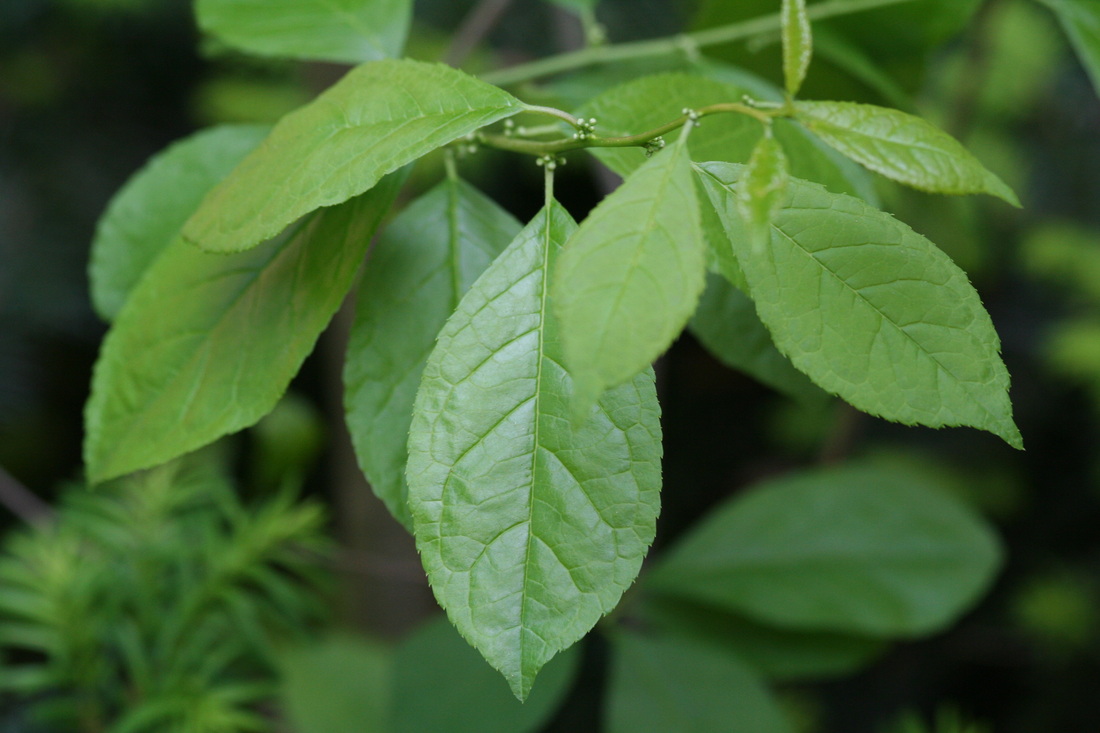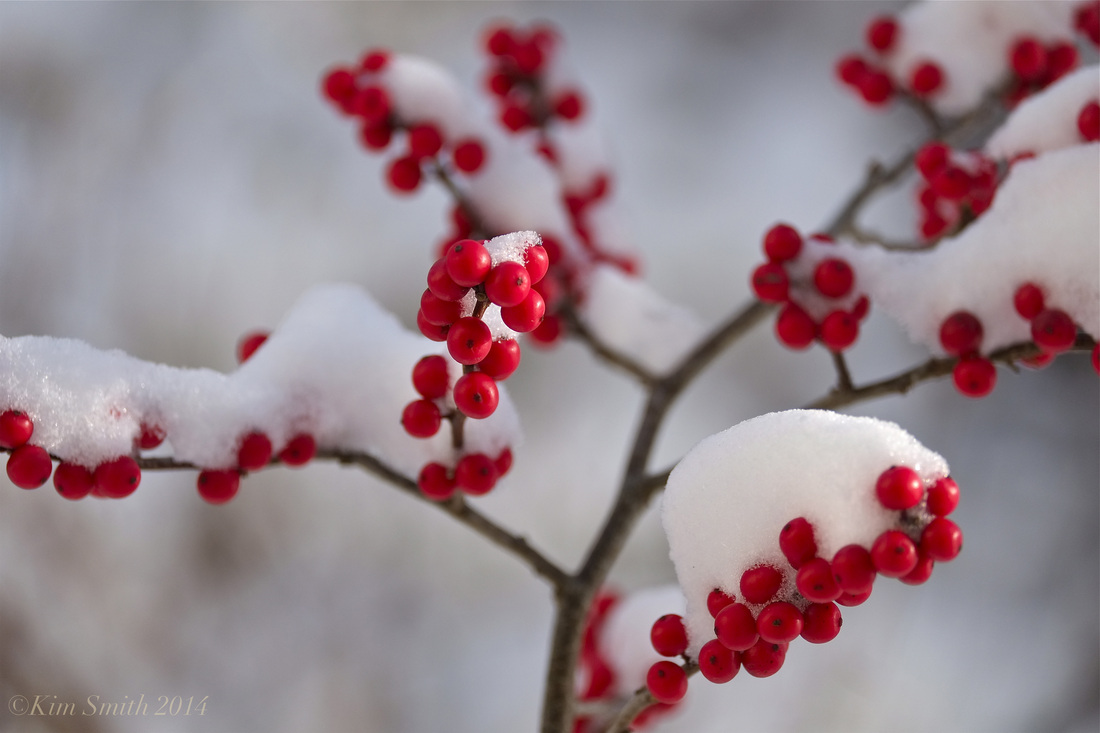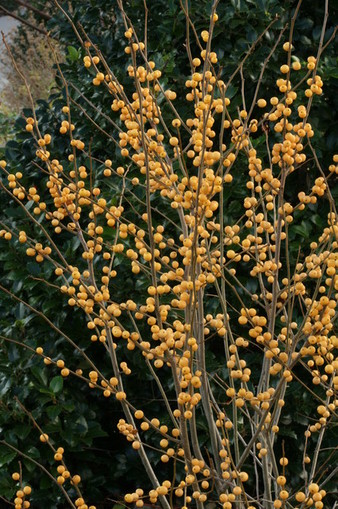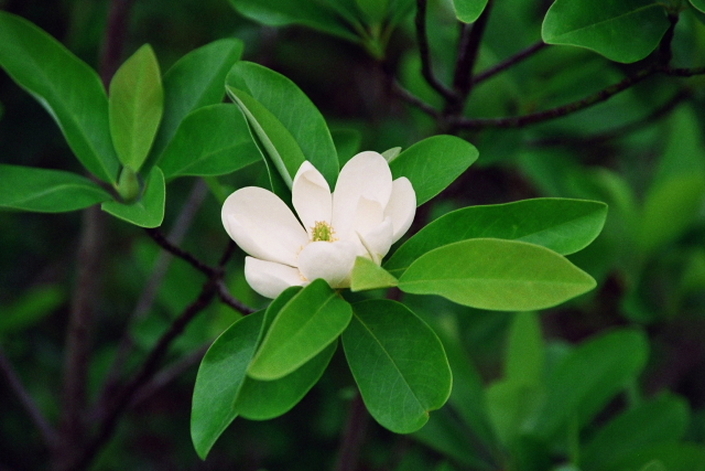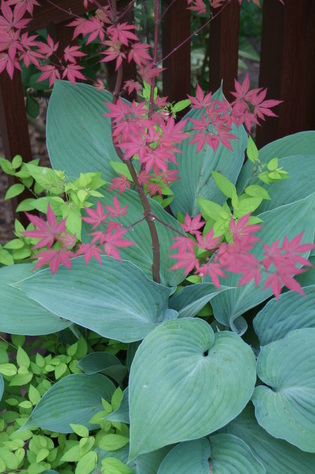 I use to spend hours in the nursery picking out plants for my containers and then standing in long lines to check out. That is, until I got smarter about container gardening, specifically the containers. If I could leave the containers outside year round, then why couldn't I fill them with perennials, shrubs and even small trees? I would plant them once, watering them only during periods of summer drought. I could poke in some extra annual color, if I had the time. Otherwise, they would carry themselves through all seasons with little, if any, attention. First, I had to get rid of all my terra cotta pots, which are porous and will crack in cold weather. Then I bought just a few very large containers made of a fiberglass, composite or ceramic rated for the outdoors. They were expensive, but what I saved in annual plants quickly justified the cost. Then I had to select plants that enjoy average to dry soil conditions and the given light exposure and heat on my deck. I also wanted the anchor shrub or small tree to be upright or vase-shaped in order to accommodate perennials, keeping in mind, the perennials would eventually become well-shaded by the tree or shrub. Here are several favorite trees and shrubs for containers... Deciduous Magnolia (The Little Girl Hybrids) Holly (Ilex crenata 'Sky Pencil') Japanese Maple (Acer palmatum) Juniper (Juniper) Oakleaf Hydrangea 'Snow Queen' (Hydrangea quercifolia 'Snow Queen') Panicle Hydrangea (Hydrangea paniculata) Red- or Yellow-twig Dogwood (Cornus alba, Cornus sericea) Serviceberry (Amelanchier) Variegated Boxwood (Buxus sempervirens 'Variegata') Winterberry Holly (Ilex verticillata) 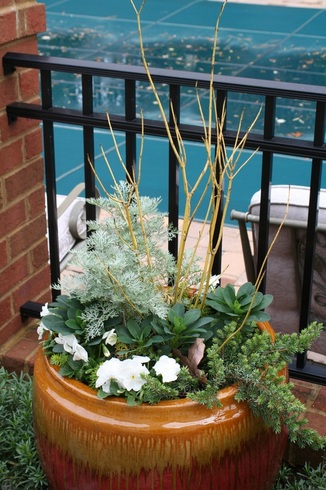 as well as favorite grasses and perennials... Arborvitae Fern (Selaginella braunii) Black Mondo Grass (Ophiopogon 'Ebony Night') Bleeding Heart (Dicentra eximia) Dianthus (Dianthus) Euphorbia (Euphorbia) Heuchera (Heuchera x villosa) Sedge (Carex) Hosta (Hosta) Hypericum (Hypericum calycinum 'Briggadoon') Japanese Shade Grass (Hakonechloa macra) Lady's Mantle (Alchemilla mollis) Lamium (Lamium maculatum) Miscanthus (Miscanthus sinensis) Panicum (Panicum virgatum) Sedum (Sedum rupestre 'Angelina') Spirea (Spirea japonica) Sweet Flag (Acorus gramineus) In a container I treat Spirea as a perennial (top photo). By plucking a few babies with roots from the base of the mother plant and tucking them in close to the middle plant of the container, Spirea will weave itself through, over, and around the other plants in just one season. Awesome effect, especially from Spirea japonica 'Goldmound'. Next, we'll start to discuss the design process given a blank slate. Until then... have a great week!
Sedge cultivars run the gamut in terms of moisture and exposure requirements. Matching existing conditions with individual plant requirements will just about guarantee growing success. My favorites native species are Carex flaccasperma, laxiculmus, and pensylvanica.
As a designer, I go through a fairly extensive process of developing the structure of the landscape before choosing the plants. With lawn, beds and transitions in place, I pick the combinations of plants for the different beds, focusing on the leaves of the specimen plants and shrub masses. They are the bones of each design. As I step the beds down to walkway or lawn space, the perennials begin to come into play. They are, perhaps, the icing on the cake. Although the native perennial category is large, I am laser-focused on perennials that perform well in all seasons and, for the most part, take care of themselves.
A tremendous number of Heuchera villosa offspring have taken the nursery market by storm in recent years, many trying unsuccessfully to bust onto the tried-and-true stage. For now, I recommend sticking with the slightly older Heuchera that have consistently outperformed the newbies. In my journal, they are Heuchera villosa 'Autumn Bride', Heuchera x villosa 'Caramel', 'Georgia Peach', 'Berry Smoothie' and 'Pistache'. I may be adding 'Georgia Plum' this season as well. Next week, we'll continue with native perennials for the foundation. Have a great week!
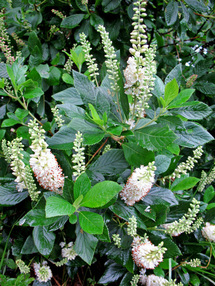 Clethra alnifolia Clethra alnifolia The soil moisture levels around our house foundations tend to be average to wet even without irrigation. No gutters, overflowing gutters, add an irrigation system without a rain sensor and a foundation can be really wet all the time. From a native plant standpoint, we're in luck... kinda. Over the years I have found there are lots of native shrubs that enjoy extra water (i.e. Clethra, Itea, Aesculus, Vaccinium, etc.). However, not all are appropriate for foundation design. There are several other challenges as well. Many native shrubs mature at a height taller than four feet, which, unless you have an usually tall foundation, is greater than windowsill height on most homes. We want sunlight coming through those windows without giving up our Saturdays to keep it that way. The availability of native evergreens is also problematic. It's a relatively small category of plants. So locating shrubs that are native, evergreen or deciduous, thrive in average to wet soil, and grow to a maximum height of four feet or less is not an easy task. But, I have a few suggestions, both evergreen and deciduous...
Illicium floridanum 'Pink Frost' is a relatively new cultivar and has quickly risen to the top of my favorite list. Evergreen, subtle variegation, and extremely slow-growing, I will put this on a foundation because homeowners might prune this shrub every other year. It's that slow. Illicium must have full shade or no more than a few hours of morning sun. The soil around these plants should not be allowed to become powder dry, and these plants will require supplemental water during drought. If and when to irrigate will depend on day and nighttime temperatures. Dig around periodically to assess the moisture levels of your soil and how well it drains.
Next time we will continue with native perennials and grasses, which is a huge category. I will stick to my favorites for the foundation and tell you why. Until then... stay safe and think spring. I think we can all agree today's front foundation beds should be a mix of evergreen and deciduous plants. The best part of the different seasons is the anticipation of the plant changes from one season to the next. Right now, I can't wait for the popping of buds and that chartreuse leaf color of early spring. So what does any of this have to do with native plants? A lot. For many of us, native plants are thought of as the wild ones, relegated to the backyard, perhaps the far backyard. Most of the available species and cultivars are deciduous, maturing at obnoxiously large sizes. Here's where an understanding of plant size and shape as well as some of the basic steps to design I've discussed so far come into play.
For another example, how about Winterberry (Ilex verticillata)? Although it's part of the Holly genus, the leaves are soft and the plant is deciduous. Depending on the cultivar, it ranges in mature height from 5 to 9 feet. The bloom and fall color are nothing to write home about. But the winter show of berries on this upright shrub is simply fabulous. But please note, a male Winterberry that flowers at the same time must be planted somewhere in the yard for cross pollination and eventual berry production. This plant makes a terrific multi-stemmed small tree on the foundation. My third example is Magnolia, but not the large evergreen you may be familiar with. Two trees, or perhaps large shrubs, for consideration are Magnolia x grandiflora 'Little Gem', which is evergreen, and Magnolia virginiana (Sweetbay Magnolia). Both of them are upright and can be used on a house corner or between windows. You can keep them even more narrow by judiciously pruning the outer most limbs. The mistake most of us make is planting too close to the foundation for instant gratification, not accounting for the mature size of the plants. Set the buckets. Then force yourself to pull them off the foundation to the appropriate distance and then some, keeping in mind that the first year they sleep, the second they creep and the third they will certainly leap. Also, where plants are happy, they can outgrow the stated heights and widths by as much as a foot in all directions. Landscape materials are expensive and a long term investment for a home. It pays to be patient and anticipate the end result. Here we've looked at large native plants used as small trees at the foundation. Next time we'll talk about several smaller native shrubs for the foundation and why they work well.
|
Welcome to my journal. For over 20 years I've created original landscape plans to help homeowners increase property value and really enjoy their yards. I approach every project as an unique opportunity to develop a work of living art, one that will require minimal care and age beautifully with time. In this journal, I will share some of my field experiences and tricks of the trade with you. Feel free to email questions. Thanks for visiting.
Archives
February 2019
|

